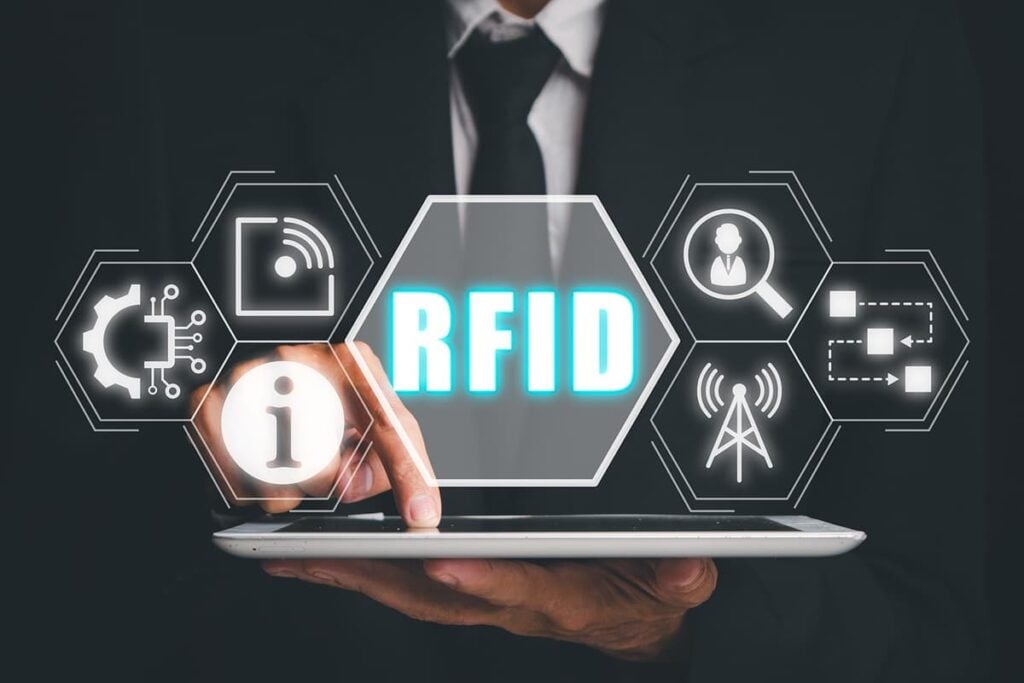8 Startups Following You with Beacon Technology
Table of contents
As we covered in May, audio beacons used to track and respond to consumer behavior are all the rage these days. The Proximity.Directory Report—known in industry lingo as Proxbook—found over 15 million proximity sensors deployed globally as of the second quarter in 2017. ABI Research predicts that number to reach over 400 million by 2020. Of course, we’re always a bit skeptical of these market research firms. Another says the beacon technology market will be worth $58.7 billion by 2025, but who knows if another technology might emerge in the next eight years to blow that number up, leaving beacons as valuable as pet rocks.
Still, the old joke—just because you’re paranoid doesn’t mean they’re not following you—holds true in this case. They really are listening. There are some who view this technology as too intrusive; Wired, for example, worries about the risk of ‘incidental data collection’. There are potential abuses to consider, to be sure, but we’ll leave those to the ethicists among us. From an investment point of view, helping companies sell consumers more isht they don’t need results in higher profit margins, plain and simple.
Here are a few startups making waves in the industry.
The Next Thing in Retail
RetailNext is the leader in this space, with $184 million in funding from August Capital, Nokia Growth Partners, and more. The San Jose, California company has been around since 2007 and now tracks more than one billion shoppers per year by collecting data from more than 65,000 sensors. They call their solution ‘Applied Big Data’ for physical retail, and it uses best-in-class video analytics, WiFi detection, Bluetooth, on-shelf sensors, beacons, and point-of-sale to tell retailers how people engage with their stores.

Its customers include Bloomingdale’s, Brookstone, Yeti and about 350 other retailers. One of them is an e-commerce shoe store—oh, wait, shoe art studio—that is expanding into brick-and-mortar. The company is using beacon technology from RetailNext to determine where customers linger and spend their shopping hours to help in the design of new stores. Er, studios.
There’s No Place Like Retail

PlaceIQ also develops highly precise maps of physical locations, even employing cartographers to hand-draw physical outlines. It then combines that information with data from anonymous device signals to help stores understand how their shoppers move.
Channeling In-store Data


For example, Euclid worked with a Pacific Northwest hardware company called McLendon, which used the data to grow its database, with 75 percent being new to the company’s customer relations management system. McLendon used those new email addresses to “power AdRoll retargeting campaigns, which are performing at a 30 percent higher clickthrough-rate compared to the industry average”.
Real-time Advertising
Swirl Networks’s technology delivers highly targeted content and offers to shoppers’ phones while they’re in the store. Founded in 2011, the Boston company has $32 million in funding from SoftBank and, interestingly, Twitter Ventures, among others. Swirl combines patent-pending beacons with cloud-based marketing campaign management services and a software development kit to allow retailers to add an in-store mobile experience to any existing mobile app.

Best Buy, Lord & Taylor, and Urban Outfitters are just a few of the big names who swing with Swirl.
Coming Face-to-Face with Marketing

There’s an App API for That


It’s not all about creepy advertising. The Guggenheim Museum, for example, uses Estimote beacons throughout the building to push content about its art to visitors so they can seem smart at the next black-tie affair.
Watch Where You Step
Milwaukee-based Scanalytics, founded in 2012 and with $2.02 million in funding, measures the movements of individuals in physical locations, recording, storing, and analyzing where people walk, stop, and orient. The company’s proprietary technology gathers this data passively and unobtrusively without cameras, RFID, or cell phones. So how do they do it then? Through smart floor sensors called SoleSensors that measure foot traffic and movement.

Stores lease the sensors for a lifetime or a day and place the devices themselves—no complicated installation required.
A Custom Experience
Founded in 2012 and based in Bellevue, Washington, Footmarks brings creative experiences and digital intelligence to physical spaces. With $1.97 million in funding, Footmarks has developed an experience-based analytics solution using secure end-to-end beacon technology. The company’s iBeacon technology is controlled via a cloud management portal, allowing stores to create one-to-one experiences with their customers and extend brand experiences across all physical locations. We’ve talked before about this customization of consumerism and marketing. Footmarks’ client list is impressive: Nordstrom, Redbox, AMC Theatres, Barnes & Noble and MGM Grand are just a few using the iBeacon.
Conclusion
We’d be remiss if we didn’t mention the elephant in the room of beacons, and that’s Facebook. Yep, the company with approximately two billion monthly users has developed its own beacons. For now, they’re only being distributed to a limited number of businesses. But considering the amount of personal data we give to Facebook, the company’s influence on how the industry evolves will surely be massive. And as other companies like Amazon push further into brick-and-mortar operations, we would bet they’ll develop their own beacon technology or gobble up one of these startups. On second thought, maybe we should bring those ethicists into the conversation …
Sign up to our newsletter to get more of our great research delivered straight to your inbox!
Nanalyze Weekly includes useful insights written by our team of underpaid MBAs, research on new disruptive technology stocks flying under the radar, and summaries of our recent research. Always 100% free.














